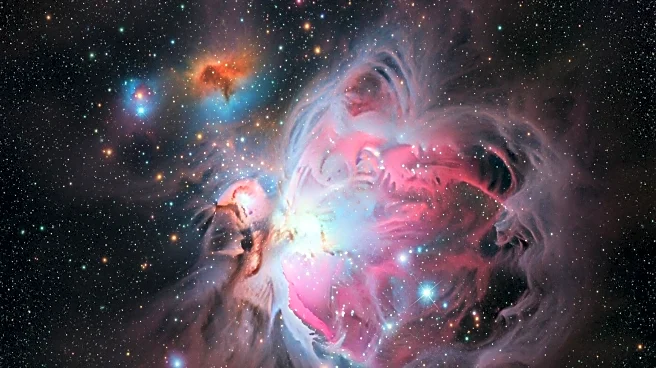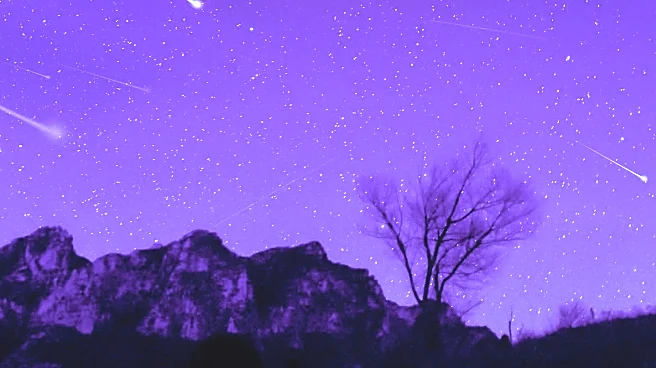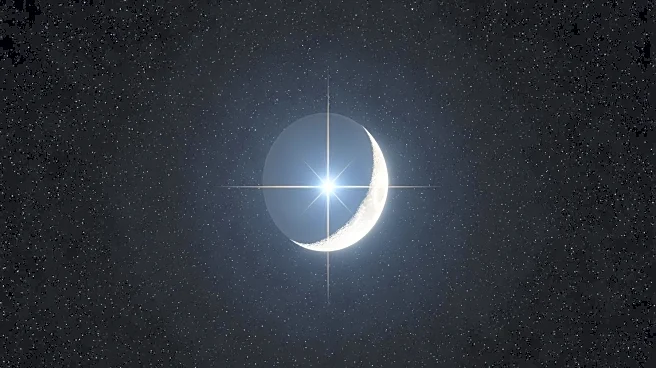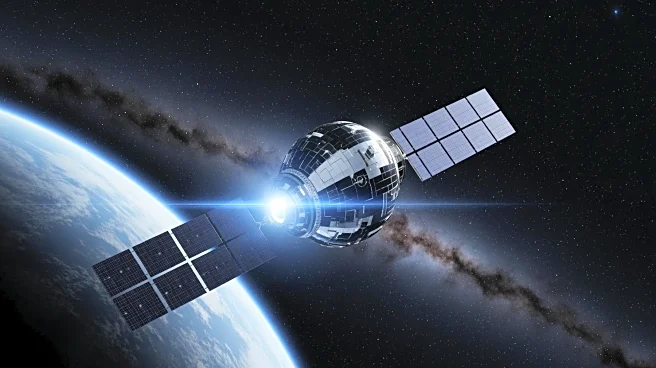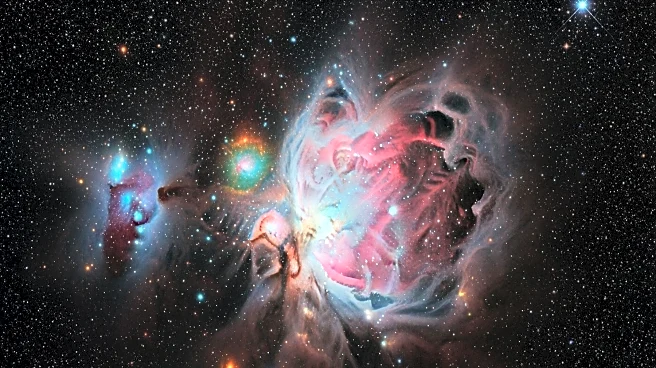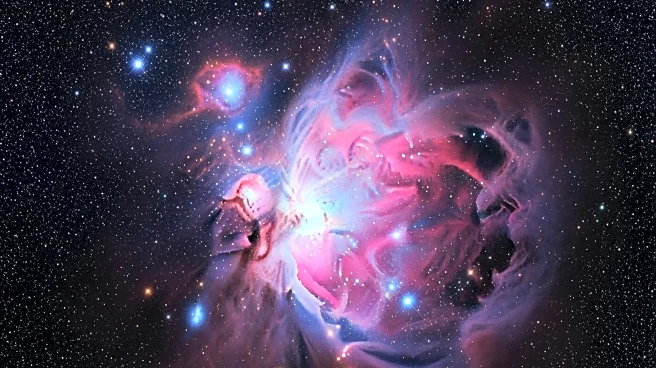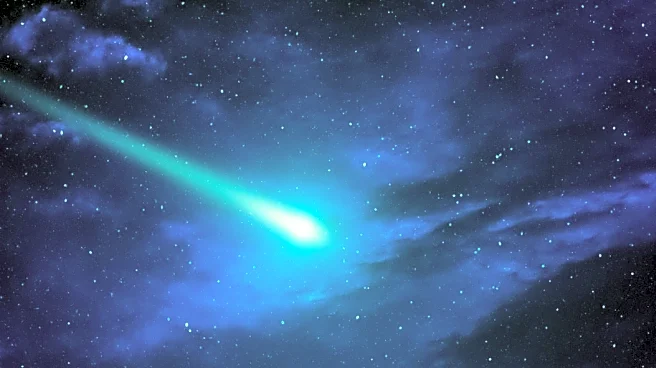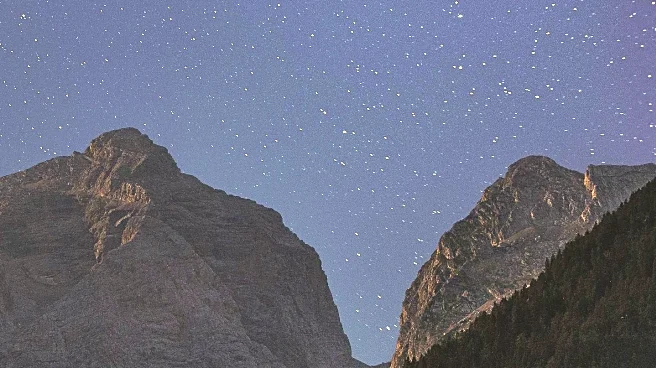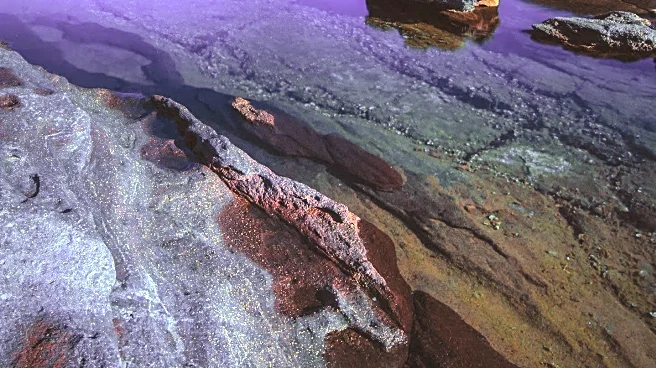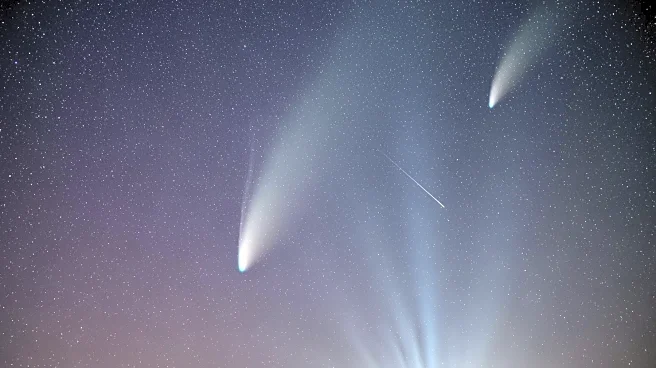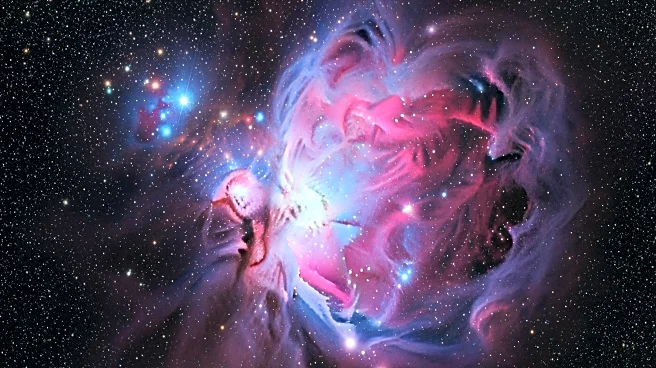What's Happening?
The California Nebula, known as NGC 1499, is a prominent target for observation in the southern Perseus constellation. It is illuminated by the nearby star Xi Persei and spans approximately 2.5° by 0.5°. Despite its magnitude 6 brightness, the nebula
has a low surface brightness, requiring dark skies and a Hydrogen-alpha filter for effective visual observation. The nebula is a popular subject for astrophotography due to its size and unique shape resembling the state of California. The optimal viewing period is when it reaches 45° altitude by 11 P.M. local daylight time, peaking around 3 A.M.
Why It's Important?
The California Nebula's visibility provides an opportunity for both amateur and professional astronomers to capture stunning images and study its characteristics. Observing such nebulae can enhance understanding of stellar formation and the interaction between stars and surrounding gas clouds. The event also underscores the importance of dark skies for astronomical observations, promoting awareness of light pollution's impact on scientific research and public enjoyment of the night sky.
Beyond the Headlines
The California Nebula's observation highlights the growing interest in astrophotography as a hobby and scientific pursuit. It encourages the use of advanced equipment and techniques, such as Hydrogen-alpha filters, to capture detailed images of celestial objects. This trend may lead to increased investment in astronomical equipment and education, fostering a deeper appreciation for the universe and its wonders.
